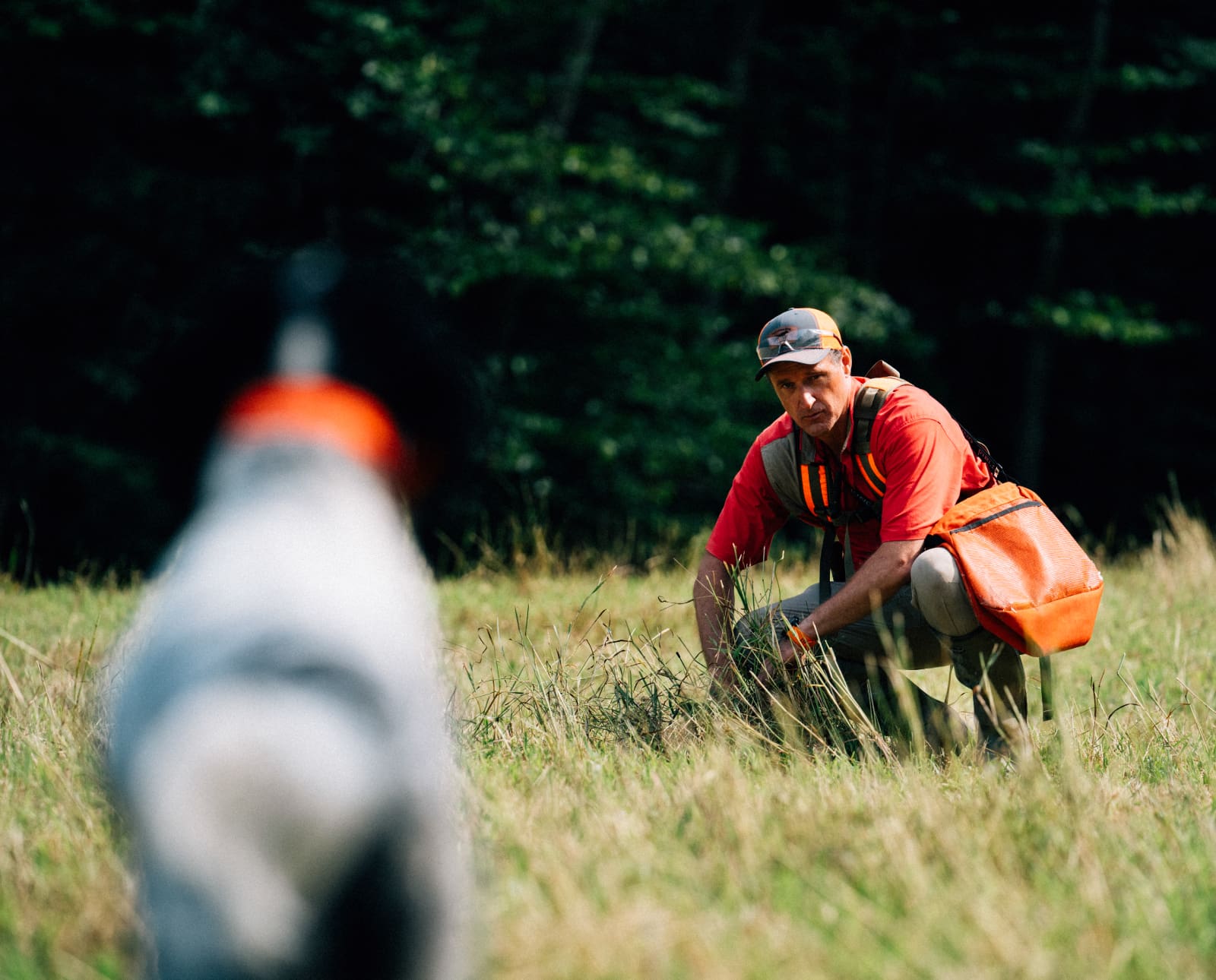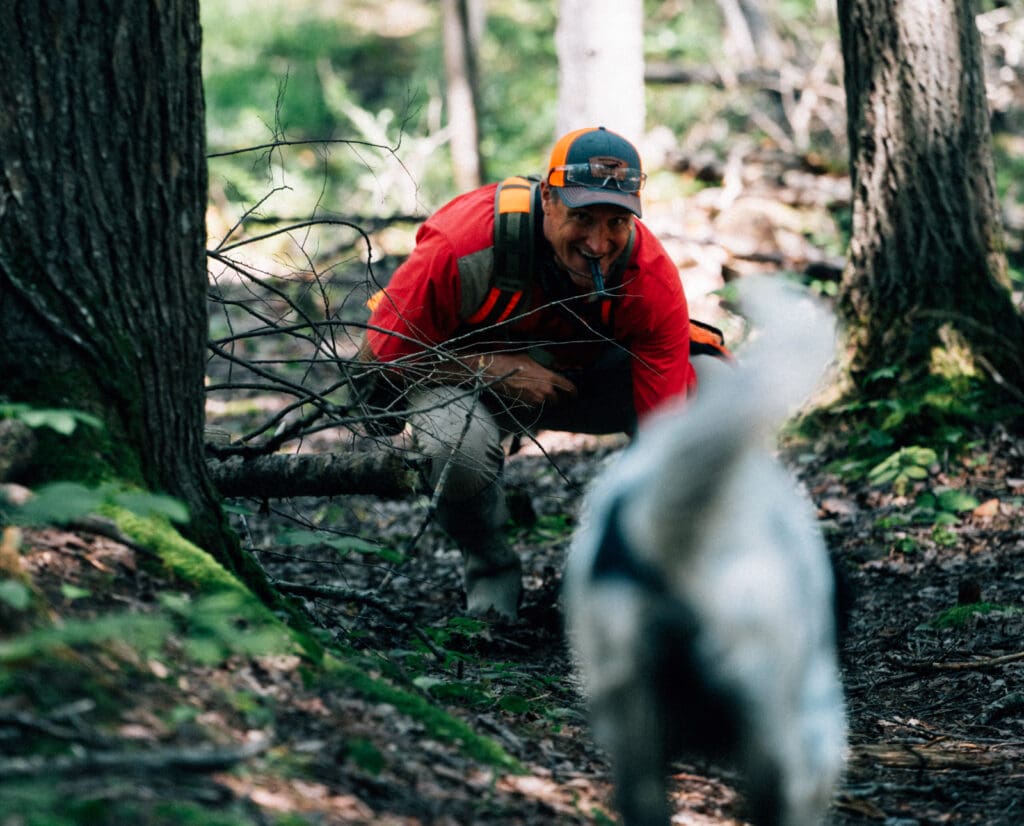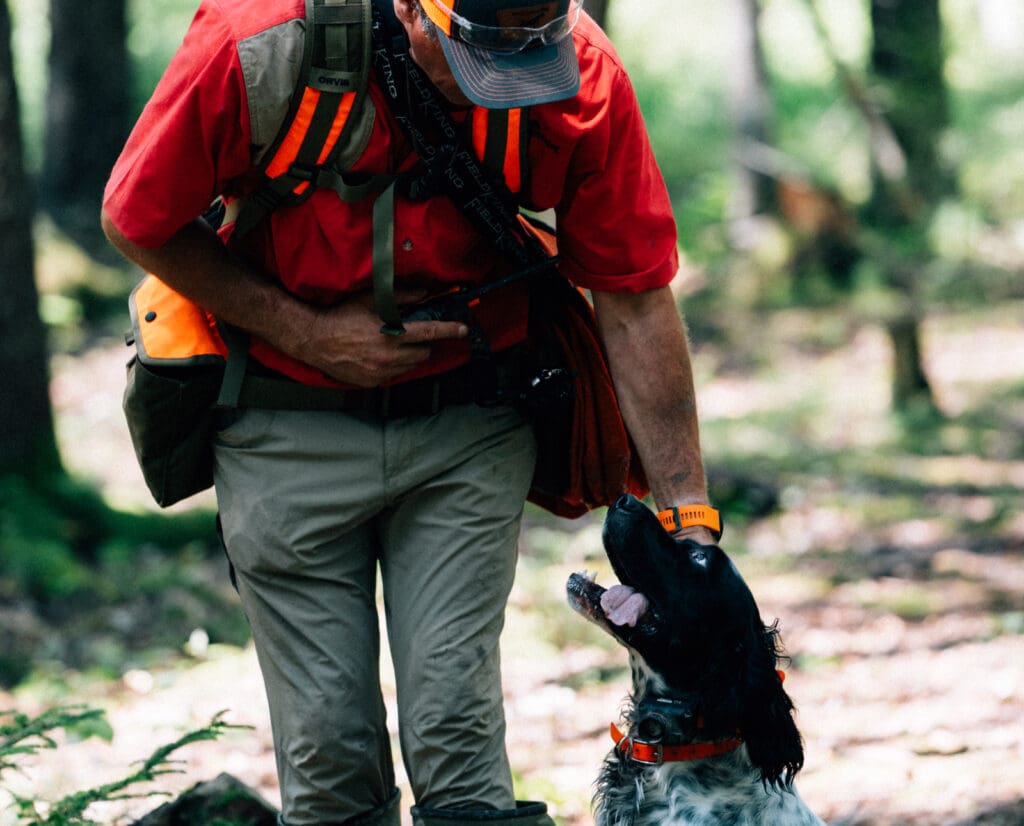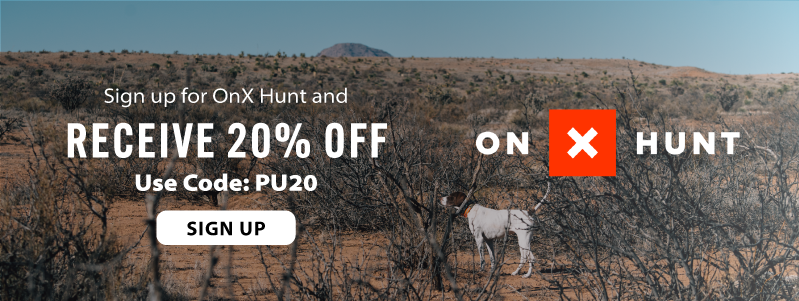Home » Hunting Dogs » The Importance of Eye Contact During Dog Training
The Importance of Eye Contact During Dog Training

Jason Carter is a NAVHDA judge, NADKC member, director of…
Create teamwork and connection between you and your dog by learning to read each other’s eyes.
When acting selfishly while playing youth sports, the common phrase “there’s no I in team” was repeatedly thrown around. My coaches insisted I trust others with the ball to develop good teamwork. But giving up the ball didn’t come naturally. I often got “the eye” from my coaches, revealing their disappointment in my lack of team play. They’d use various positive and punitive techniques to get their points across, though eventually, “the eye” was all it took for me to know what needed to be done.
Listen to more articles on Apple | Google | Spotify | Audible
Young pups naturally follow a similar journey to learn to obtain items they cherish and identify gestures that lead to things they don’t like. As a good coach, your job is to teach your dog how to be a good teammate through eye contact.
Dogs Communicate And Learn Via Eye Contact
Have you ever noticed that your dog has a knack for disappearing at exactly the right moment? It knows when you are unprepared to stop it from snatching that steak off the counter. It knows when it can take a few steps closer to the bird or the right time to break to catch it. Whenever you stop to say hello to a friend while on a walk, you feel that all too familiar tug on the lead.
Your dog knows when you’re distracted because it studies your eyes. Similarly, when you are laser-focused on the dog, it grows a halo and obeys your every command.
A dog is incredibly attuned to its surroundings. Dogs have been bred for many generations for their intelligence and focus, which shouldn’t be underestimated. Watch a dog when it enters a new environment. It instantly starts taking inventory of the things of interest or concern. The fluctuation in the dog’s emotional responses to these stimuli can be gleaned from its eyes.
Since your dog can’t efficiently verbalize how it feels, it will use eye contact to cross the language barrier, a common behavior of cooperative dogs. Through dog training, a dog will develop a working relationship in which it obtains the things it wants by providing its owner with the things he wants.
The desire and need for connectivity between the dog and its handler drive learning. It’s a symbiotic relationship in which the dog is driven to work as a good team player, which can easily be seen through the level of eye contact the dog makes. Eventually, you’ll be able to change your pup’s mindset with a look.

Eye Contact Yields Connection and Control
One evening during a group class, we asked handlers to heel their dogs. Within seconds, we realized a common thread amongst the handlers was the need for more focus from both the handlers and their dogs. They were so consumed by gathering feedback from one another that they were literally running into each other. In an attempt to avoid mistakes, the entire room had become disconnected. It was abundantly clear that we needed to take a step back and slow everything down.
Too often, as trainers, we futilely push ahead instead of pausing, stepping back, and re-evaluating the situation. We work harder rather than smarter, continuously using the only tools we know regardless of their lack of success. In these moments, we need to think about what can be done to make the picture smaller so the dog can find success while moving us in the right direction.
This process is known as shaping and chaining. We shape behavior by scaffolding drills that progressively get us closer to our desired finished product.
For this lesson, we needed to pull the dogs to the side, sit them down, and attempt to make eye contact. For every glance into the handler’s eyes, the behavior was excitedly marked with praise and a reward. Soon, each dog began to connect to its handler. Systematically, each handler began to take one step at a time, attempting to move their pup while maintaining eye contact. The connectivity throughout the class quickly improved. The handlers started to support the dogs’ feedback, drastically changing the tone of the class. There was a new balance between the dogs and handlers. The class quieted, and the chaos quelled for the time being.
Most of the new handlers were surprised at how quickly their pups came into the fold in that environment. What was once a sense of hopelessness was replaced by one of connection and control. This balance infiltrated other drills throughout the evening. It was an eye-opening experience for many.
Pairing Visual and Verbal Cues With Puppies Is Important
Eye contact is created within a young pup’s early development. The pup uses eye contact to communicate a need and seek affection or attention. The term “puppy eyes” is derived from the pup’s ability to obtain rewards through staring at you. Often, the irresistible stare encourages us to reward the behavior, which eventually teaches it to beg. However, taking a few minutes a day to share loving stares with a new pup helps with the pairing process, building an early bond of trust and teaching it to seek out your eyes for affection.
The pup will learn to understand your communications through visual and verbal cues, though the visual cues are what dogs rely on most heavily. It will study your every movement and facial expression to gather feedback. The clarity in this feedback is the pathway by which learning accelerates.
Developing the coordination to use visuals takes some time. An experienced trainer can handle a lead with one hand, coordinate their body position to maintain eye contact and provide the right facial cues and hand signals to promote learning simultaneously. It all looks easy until you find yourself in a tangled mess face down in the mud; it’s a right of passage for most trainers.
Body coordination is something to sort out so we can finally put it together and share that “ah-ha” moment with our dog. It’s one of those things we all look back at and laugh, realizing we all started with a face full of mud before we were able to connect all the pieces. Embrace the ridiculousness, and know your dog will wait patiently for you to put it all together.
An Example Of The Importance Of Reading Eyes
During a NAVHDA training clinic, a big German Wirehair and its owner came to my station to work on field steadiness. While interviewing the handler to find the holes in training, I noticed the dog positioning itself behind its handler. At the time, I thought the dog lacked socialization and was a bit nervous around new people. The handler identified that the dog would hold point until the handler went ahead of it, at which point it would crash in to grab the bird. We settled on a plan of action and set off to see what we could accomplish.
At the start of the run, it became clear that the dog lacked the cooperation required to keep it within range. The handler was overly dependent on the e-collar, and the dog responded very little to verbal commands without electrical stimulation. I decided to take a pause and asked the handler to recall his dog.
I explained what I saw and asked if he’d be willing to be more hands-on with his dog instead of using the e-collar. We placed a long lead on the dog and performed several obedience drills to gain better compliance without any electrical stimulation. Initially, the dog resisted, though, in time, the handler became relevant and respected by the dog.
We left the long lead on the dog to balance its excitement for now, reminding it that we were in control. We moved the dog downwind of a bird, and he locked up on point with stunning intensity. I asked the handler to go to his dog and gently stroke its back. I wanted the handler to let the dog know they were a team, not competing for the bird. I remained back on the long lead to deny any attempts for the dog to catch the bird.
As the handler moved ahead of the dog, I saw the dog loading up to break. I told the handler to stop. The handler was completely unaware his dog was about to break. “What are the eyes telling you about the dog?” I asked.
“I see crazy eyes,” he replied. He explained that he had zero presence with the dog. The dog was fixated on catching the bird. I asked him to return to his dog and slow everything down, providing the dog with a calming touch. We saw the dog finally relax over the next minute or two, so I asked the handler to attempt to get closer to the bird again. The handler marched ahead again, completely oblivious to the attitude of his dog. It became clear that a hands-on demonstration was required to get the point across.
Walking up the lead, I noticed the dog exhibiting nervous energy, softening on my approach, and showing the whites of its eyes. Being as non-threatening as possible, I gently stroked its back. The dog returned its focus to the bird with a much stronger connection, ignoring my presence. To become relevant, I gently held his collar while calmly stroking his back. The dog appeared to relax and centered its attention on the bird. The handler seemed to be impressed, whispering, “Nice work.”
I found this peculiar because the dog was at a utility or finished dog level. Then, the owner said, ”He has never let another person touch him before. I’m surprised at how well he is doing.” At that moment, the dog’s head slowly swiveled in my direction. When our eyes connected, I saw terror in the dog’s eyes. In a flash, the dog spun 360 degrees in an attempt to escape, pinning my ring finger beneath its collar. I straddled the dog, holding his back end just long enough to yell, “Grab that dog!”
The handler ran over to grab the dog, and it spun another 90 degrees. I looked down at my dislocated finger, twisted in the wrong direction. “Cut the collar!” I said.
My gunner used his leatherman blade to swiftly slice the collar, releasing my finger. With the surge of blood returning to the dog’s brain, it instantly passed out and stopped breathing. Fortunately, within moments, the dog regained consciousness and returned to its feet.
This was a very scary situation that could have been avoided if I had heeded the messages from the dog’s eyes. The dog revealed its intentions to me the moment our eyes locked, and then it quickly darted to one side, indicating that it was terrorized and about to flee.

Learn To Read Your Dog’s Eyes
A pup’s ADD-learning style is often attributed to being a puppy rather than your disconnect as a trainer. Training becomes inconsistent without focus and attention from you and your dog. We miss important moments, causing learning to ebb and flow without apparent rhyme or reason. It’s important to know what the eyes of the dog are sharing with you since they communicate so much.
Of course, there’s the loving stare or affectionate squint of your happy dog releasing feel-good hormones to you both. Often, when two dogs meet for the first time, their initial communication is a stare. Mature dogs may start with a direct stare, whereas younger or submissive dogs avoid eye contact to show submission or playful intent. Alternatively, when two dominant dogs are about to fight, you might notice one postures and intensely, directly stares at the other dog at a distance. However, the moment the eyes connect at a close range initiates the fight. You may also have experienced the intense stare of a dog protecting a resource, letting everyone around know that the item is theirs.
When training a bird dog, reading its eyes will clue you in on its mental state and intentions. For example, the half-moon white of the eye indicates fear or anxiety. Attentive stares tell you the dog is ready to learn. Blinking indicates it might be experiencing stress. Darting eyes warn you that the dog is in flight mode. Posturing with a direct, intense stare reveals the dog is prepared to fight.
Changes in eye expressions happen quickly and can only be caught by those connected to their dogs. This allows us to make timely adjustments that are essential to changing behavior, promoting learning, and keeping you and your dog safe.
As my coaches revealed, the right look at the right time can make all the difference. Whether it’s maintaining steadiness on the hunt or ensuring the dog makes a clean retrieve during a test, your emotions and expectations can be revealed to the dog in just a glance. The experiences and training you share with your dog develop a level of teamwork experienced in no other place in life. Being able to share your affirmations and displeasure through expressive eyes is a skill shared only by those truly connected to their dog. It’s a sign you are playing on the winning team, guaranteeing when the final buzzer sounds, you will have the fortune of carrying the memories of many successful days in the field.
Jason Carter is a NAVHDA judge, NADKC member, director of youth development, secretary of NAVHDA’s youth committee, clinic leader and trainer at Merrymeeting Kennels. He has been around versatile hunting dogs his entire life, literally! Born into the Carter family and Merrymeeting Kennels, he attended his first NAVHDA test in Bowdoinham, Maine, when he was just a year of age. Jason successfully trains, tests and breeds Deutsch Kurzhaars in both the NAVHDA and NADKC testing systems. Through his work at the kennel, Jason has had the opportunity to develop pointers, flushers and retrievers over the years. When October arrives he can be found with family and friends hunting throughout New England.






Thank you Jason, great article. Jim